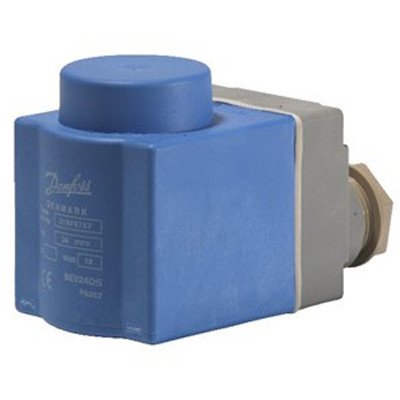Bobin Solenoid Coil
The coil or solenoid is one of the essential parts of electric valves, which is responsible for converting electromagnetic energy into mechanical energy. A bobbin is an electromagnetic magnet consisting of a central core and a coil. When an electric current is connected to the coil of the solenoid valve, the coils around it are equipped with magnetic properties and become magnetic magnets. There is an iron barrier inside the solenoid valve. By creating a magnetic field, its central blade is pushed up and causes the flow of fluid to pass or not pass through the corresponding solenoid valve.
Solenoid Coil Structure or Components
In general, the solenoid valve coil has the following four main parts:
- body
The solenoid valve's coil body, also known as the frame, is usually made of steel alloy; The body is made of steel sheets mounted on each other. When the electric current passes through the coil of the bobbin, the body becomes magnetic and attracting the magnet causes the valve blade to move.
- Rewind
The coil is the second central part of the solenoid coil, and the number of coils significantly impacts its power; That is, by increasing the number of turns of the coil, the solenoid valve coil creates a stronger electromagnetic current. Of course, you must use copper wires with resistant insulation in the design of the solenoid valve coil because these wires corrode under the influence of fluid flow.
- Piston
A solenoid coil, also known as the piston, is used to turn off and on the flow in the valve. When the solenoid valves are designed to be closed, the solenoid is placed in the seat by cutting off the electrical current at both ends of the coil and preventing fluid flow.
Of course, if the electric current enters the coil, the body turns into a magnet, and the piston is attracted to the body. As the amount of electric current increases, the valve gets closer to the body, and after the voltage reaches the maximum, the solenoid valve opens.
- spring
The spring in the bobbin is used to return the piston to its place when the power is cut. The spring is located behind the bobbin, and when its electromagnetic current is cut off, the spring is returned to its place.

Types of solenoid valve bobbins
Solenoid valve coils are divided into two main types depending on the form of coil used:
- Solenoid valves with bobbins
This type of electric valve is designed and produced as a whole or integrated and is placed on the valve. Of course, in case of failure of the integrated coil, the entire solenoid valve must be removed, and then the failure is fixed.
- Solenoid valves with separate bobbins
In the coil design of some solenoid valves, the coil is placed separately from the solenoid valve structure; This means that these two pieces are designed separately and then placed on top of each other. One of the essential advantages of a separate bobbin is that in case of failure, the bobbin can be separated from the solenoid valve and repaired.
Solenoid coil voltages
Solenoid coils are made for both DC and AC power and often work with various voltages. Standard coil voltages include 6V DC, 12V DC, 24V DC, 24V AC, 120V AC and 220/240V AC.
Iran's most used voltage of solenoid valve coils is 24V and 220V. As you can see, solenoid valve coils have a lot of variety, and when buying, you should pay special attention to their voltage and current, the type of applied voltage, the maximum time it is on, and the type of valve.
In the store site of the specialized collection of Dematehiz, all kinds of bobbins from different companies are offered at the best prices for you to use and buy, dear users, experts, and colleagues.
Head Office: No. 463,Talebian Alley,Taleghani St.Tehran,Iran


DamaTajhiz has provided the opportunity to sell and ship specialized HVAC equipment for applicants in the following countries as the first and the most popular online store for selling HVAC equipment (Heating , Ventilation , Cooling , Air conditioning) in the Middle East : Afghanistan – Tajikistan - Uzbekistan – Turkmenistan – Azerbaijan – Armenia – Georgia – Turkey – Iraq – Syria – Jordan – Kuwait – Emirates – Qatar – Oman.